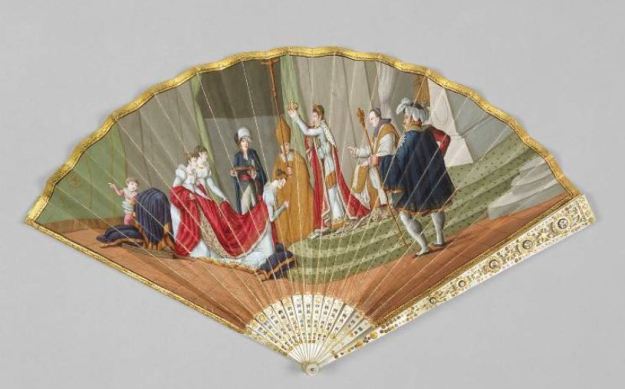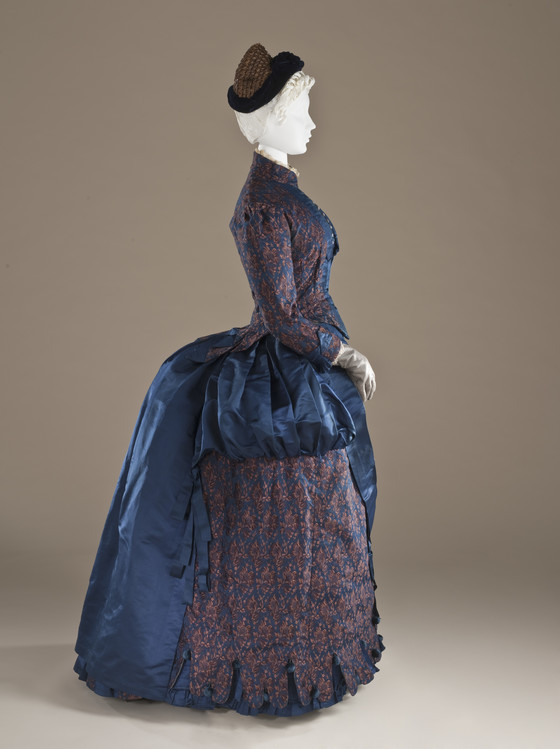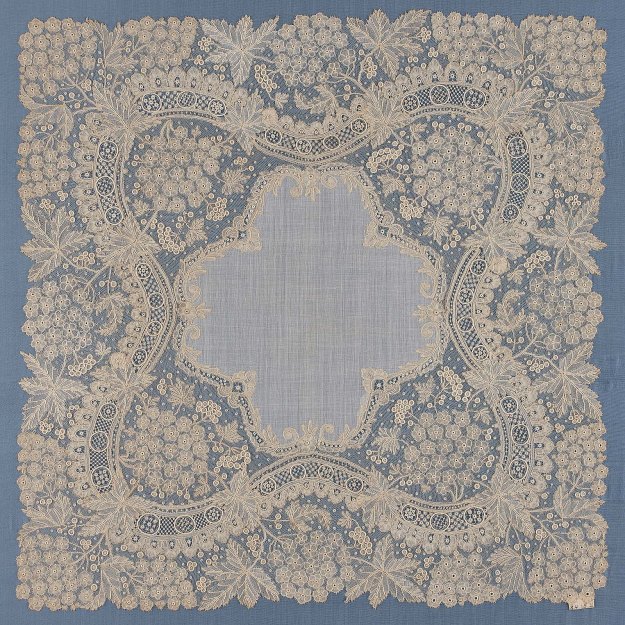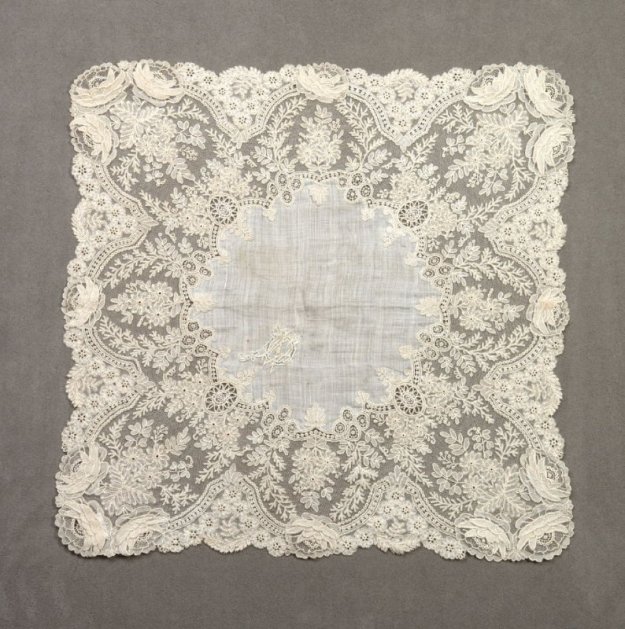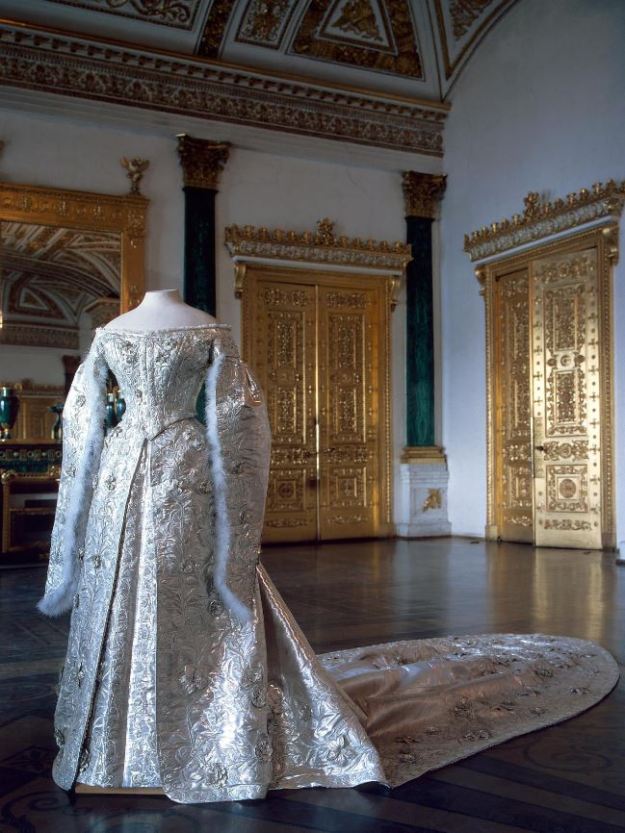
THE NATION THAT SHOPS
By Mrs. John Van Vorst
Some distinguished Englishman, after visiting the United States, remarked that Americans “would be a great people if they didn’t shop so much.”
Shopping is, it must be admitted, the national American occupation.
The city of New York, built on a long and very narrow island, suggests the tube of a thermometer, and the population can well be likened to mercury: they fluctuate in a mass, now up, now down, moved by the impelling atmosphere of the shopping centres. Apart from the business men, who, on their way to and from their offices, crowd the subways and elevated roads in the morning and evening hours, there is a compact body composed chiefly of women and girls in the surface cars at given moments of the day. Towards 9 a.m. they are transported to the shopping district centred about Broadway and Fifth and Sixth Avenues, between Eighth and Fifty-ninth Streets. They shop assiduously until hunger calls them, reluctant, homeward; but, having lunched, they return for a further fray, which lasts until five or six o’clock in the afternoon.
Pouring into town from another direction, are the suburbanites, whose exile from the island-city compels them to take a ferry in order to reach the field of chosen activities. With tender consideration, the needs of these “out-of-town shoppers” have been met by the stores, which provide cheap lunch-rooms or restaurants situated in the upper regions of the lofty store buildings. Given such facility for eating, away from home, the serious bargain hunter can continue throughout the day, uninterrupted, her work.
Where do they all come from, you ask? Who are they, these women with nothing to do but shop?
America, it should always be remembered in judging it, came into existence definitely at about the same time with the so-called “labour-saving” machine. There is no country in the world, doubtless, where in all classes womanly pursuits have been so wholly abandoned, and the “ready-made” so generally substituted for the “home-made” in the household organism. A single instance is striking enough to give some idea, at least, of what the American woman doesn’t do.
Wishing to buy a gold thimble when in New York not long ago, I went to the most fashionable jeweller’s, and was somewhat surprised when the clerk drew from the depths of a drawer a tray with three thimbles on it.
“Are these all you have?” I asked.
He answered rather peremptorily: “We can make you a gold thimble to order. We don’t carry any assortment. There’s no sale for them nowadays.”
So here, to begin with, is one category of shopper: the woman who never sews, but who buys ready-made her own and her children’s clothes and underclothes. She chooses the cheapest confections, gets what wear she can out of them, and discards them when they begin to give way, arguing that it “doesn’t pay” to mend. This convenient logic, together with a very conscientious scanning of the advertised bargain lists, leads her to consider shopping in the light of an economy, a domestic necessity, and herself as a diligent housewife.
“But when she has children,” you very justly exclaim, “what does she do with them?”
If they are too young to go to school, she brings them with her into the overheated, dusty rooms of the crowded stores. When they are babies in arms, she trundles them in the perambulator to the threshold of the inward whirlpool, and there, in the company of other scions, she abandons them temporarily. At a popular shop I have seen a side vestibule crowded with little carriages. Now and then, as the wail of some one infant rose, heart-rending, above the others, an anxious and busy mother, having recognised from within the call of her young, rushed out, readjusted conditions for the immediate comfort of the baby concerned, and returned to the more alluring considerations of a bargain counter.
It is perhaps for such domestic reasons, perhaps for causes which affect more generally the evolution of retail shop keeping, that trade of every sort is concentrated more and more under the single roof of the so-called department store in America. As in London, so in New York, everything from the proverbial elephant to the ordinary toothpick may be bought at the stores….
Aside from the primary category of women who shop with the idea of domestic economy, there is another class who likewise no doubt exist only in the United States.
Talking not long ago with a rising young lawyer about the American habit of “living up to one’s income,” I was interested in what he told me, for it represents the situation of a large class of American business and professional men.
“They often reproach us Americans,” he said, “for our thriftlessness. They don’t realise how many expenses are forced involuntarily upon us. I, for example, was recently given charge of an important case with the condition specified that part of the large fee I received was to be immediately re-expended in making more of an outlay, generally. My offices were considered too modest for the counsel of a great financial company. I was obliged to move. I had also to rent a larger house in the country, to have more servants, and the rest. Materially, so to speak, I represent my clients, and if they keep on increasing in importance I shall be obliged to buy property and to own a motor car!”
All these enforced expenditures entail a multitude of minor extravagances which devolve upon the wife, who becomes, in consequence, an assiduous shopper. She shops, not because she has any especial needs, nor because she entertains, or has even any social life whatever, but because her husband is making money, which must be spent as a testimony to the world of his flourishing position. This category of shopper buys the finest linen for her vacant house, the most costly silver and china; she chooses diamonds which are to glitter unseen unless she wears them in the street—which, it has been observed, she very often does. She buys laces and furs, and what she has is “of the best, the very best.”
How does she educate her taste, we ask? For her taste is remarkably good, and bears even a high reputation among the Parisian dressmakers with whom she soon begins to deal.
She is imitative, she is adaptable, she seems to have no ingrained vulgarity, no radical commonness which, given the proper example to follow, she cannot shake off.
And where, in the matter of shopping, does she find this example?
In the newspapers, in the reports of what is being purchased from day to day by the élite circle who have devoted their lives to the cultivating of their tastes.
The owner of one of the largest stores in New York said to me: “In France they have periodical sales, which are advertised by the different shops a year in advance. Such a thing is impossible here. If you go any day to one of the big dress stores in Paris, you will see exactly the same pattern that you saw there ten years before: there is a whole class of people who, no matter what the passing fashion may be, dress about alike. Here”—he threw up his hands and laughed—“everybody wants to be dressed like the leaders of Society. If they see in the paper that one of them has worn some new thing at a ball, there are five thousand of them the next day who want that thing, and who are going to have it, whether they ran afford it or not.”
“So you give it to them? ”
“That’s our business—watching every caprice of the buying public. We can’t plan for any sales, we can only every now and then take advantage of a chance we may have to get cheap something the public is after. Then we can offer them a bargain.”
This lightning communication of the fashion news among shoppers extends to the smallest towns. One of the “queens” of society having appeared at the races last spring in a plum-coloured Paris gown, a ripple of “plum colour” ran over America, sounding in the ears of the manufacturers, ever on the alert. One of them said to me: “There’s nothing pretty in that plum colour, but our mills have had to put everything aside and run the looms on plum colour for five solid weeks.”
When it comes to these worldly “queens” who set the fashion, shopping in New York takes formidable proportions. We have here the estimate of the amount spent on dress per year by many a rich American woman. The items were given by the “fournisseurs” themselves.

The number of women in New York who spend fifteen thousand dollars a year on clothes is estimated at two thousand! It is not surprising, is it, that the New York shops should have the air of existing for women only? There are a few men’s furnishers and tobacco dealers who have made a name for themselves, but one finds them in the basement entrance of mansions whose facades are gay with the hats and gowns and laces that form such a gigantic item in the New York woman’s daily expenses…
The fact that two thousand women, without arousing even passing comment, should each of them spend annually on her clothes so important a sum as fifteen thousand dollars, sufficiently proves how exorbitantly expensive every trifling luxury becomes when it has been produced in or imported to the United States.
The Empress Eugenie, deploring the faux luxe of to-day, and recalling, no doubt, certain reflections made, at an unhappy moment, upon her own extravagance, wrote recently in a letter: “During all the time I was Empress I had only three dresses which cost each as much as a thousand francs: one for my wedding, one for the christening of the Prince Imperial, one for the Exposition of 1858.”
This thousand francs, which clad an Empress in such gowns as will long be remembered, is the price paid by the ordinarily successful New York broker’s wife for her ordinary little toilettes. But, while it is difficult for her to obtain a walking frock for less than two hundred dollars, her poor sister of the tenement district finds American machine-made clothes cheaper even than they are in Europe. And so it goes through all the category of articles to be found in the New York stores: the very rich and the very poor find what they are looking for. Those who have “moderate incomes” are constantly embarrassed between wanting the nice things they can’t afford and having to buy the nasty productions they don’t want.
The result is just this: everything that is fashionable is hastily copied in cheap qualities. If you are looking in a New York shop for solid, sober dress-goods, for example, to offer to a family retainer, you will be given, unless you are very explicit, the flimsy, low-grade copy of some stuff you have just seen on the backs of the rich.
This system has its advantages: in the matter of boots and shoes the cheapest ready-made dealer provides his clients with foot-covering copied in form at least from the best models procurable. And his customer, whatever may be his rank in life, car conductor or country store clerk, wears good-looking boots of which he is very evidently proud!…
In all the large department stores, and in the first-class boutiques generally, the credit system is in vogue. Doubtless this is a whet to the reckless spirit of the assiduous shopper. We read of a certain lady belonging to this category, who died quite recently in Brooklyn, New York. It was found that her “mania for shopping” was such that, during four years’ time, she had had charged to her account at the stores two hundred and fifty thousand dollars’ worth of things for which she had no use whatever! Her spacious home was filled with unopened parcels! One room, it was found, contained nothing, from floor to ceiling, but handkerchiefs. Shopping at this rate, it will be seen, becomes something in the nature of a passion, and perhaps it could not reach this degree of intensity without the facility for “charging.”
If the American shopkeeper be lenient, and very cunningly so, in trusting his customers, he is uncompromising about taking back things that have once been delivered. “No goods exchanged” is the warning which stands in glaring evidence at the threshold of the different departments. Exceptions, of course, are made for customers of long enduring reputation.
As for advertising, it suffices to scan a Sunday newspaper, or to lift one of the American magazines with its hundred and fifty pages of advertisements, to realise how keenly alive to shopping suggestion is the American woman. It is commonly understood, in fact, that the “wash day” in the middle-class American family has been changed from the traditional Monday to Tuesday, so that the housewives can take advantage of the “bargains” set forth in alluring type among the folios of the Sunday journals.
In a recent book on “Modern Advertising,” We learn that preparing the réclames for a large department store is almost as complicated an affair as compiling a daily paper. What the influence of these announcements is, is proved by a single resulting fact. For years there was a prejudice in America against doing anything—even shopping-on a Friday. So gradually, in order to attract shoppers on that ill-fated day, the storekeepers adopted the habit of proclaiming special Friday bargains and sales. Next to Monday there is no day now when the shops are so thronged as on Friday!…
The “strenuousness” of the shopper’s life is indicated by the presence in all large stores of an emergency hospital, a physician and a trained nurse to take care of the “women who faint” or collapse on their busy rounds…
The usual traditional empressé manner of clerks is debarred in American shops. Urging and coaxing, proposing, suggesting, are the salesman’s trump cards in France. They act only as an irritant with the Westerner, whose psychology, as we have seen, is somewhat peculiar. At one of the large New York stores frequent complaints were preferred, by the customers, regarding the “eagerness” of the clerks. “They only annoy us,” the fair shoppers explained, “by their politeness. We can choose for ourselves, I guess—that’s just what we go shopping for!”
The Pall Mall Magazine, Volume 37 1906: pp. 744-748
Mrs Daffodil’s Aide-memoire: The hurly-burly of the so-called “Black Friday” is celebrated in legend and song in the United States. Every year, it seems to Mrs Daffodil, there are more casualties in the “Run for the Large-Screen Television Sets;” the “Dash for the Very Latest Video Game,” or “The Race for the Last Must-Have Toy.” It is always a matter of wonder that there are so few fatalities.
Mrs Daffodil invites you to join her on the curiously named “Face-book,” where you will find a feast of fashion hints, fads and fancies, and historical anecdotes
You may read about a sentimental succubus, a vengeful seamstress’s ghost, Victorian mourning gone horribly wrong, and, of course, Mrs Daffodil’s efficient tidying up after a distasteful decapitation in A Spot of Bother: Four Macabre Tales.
